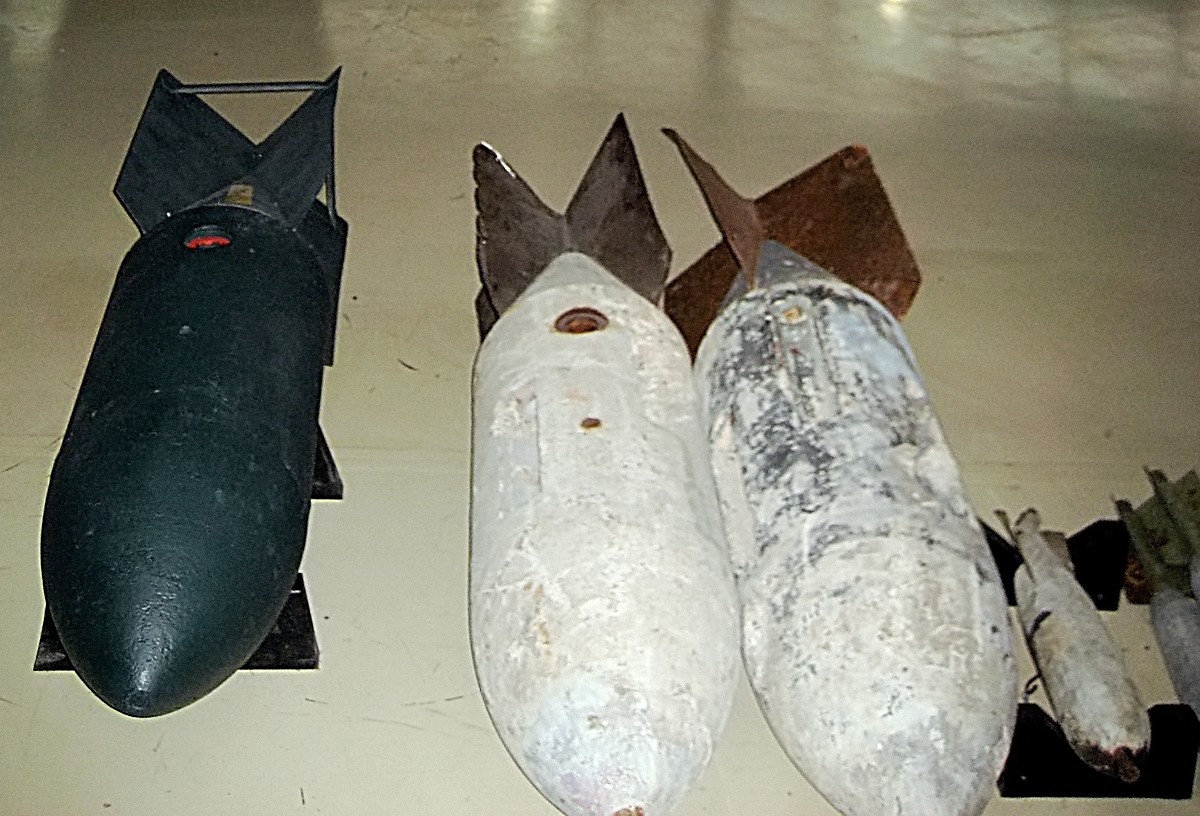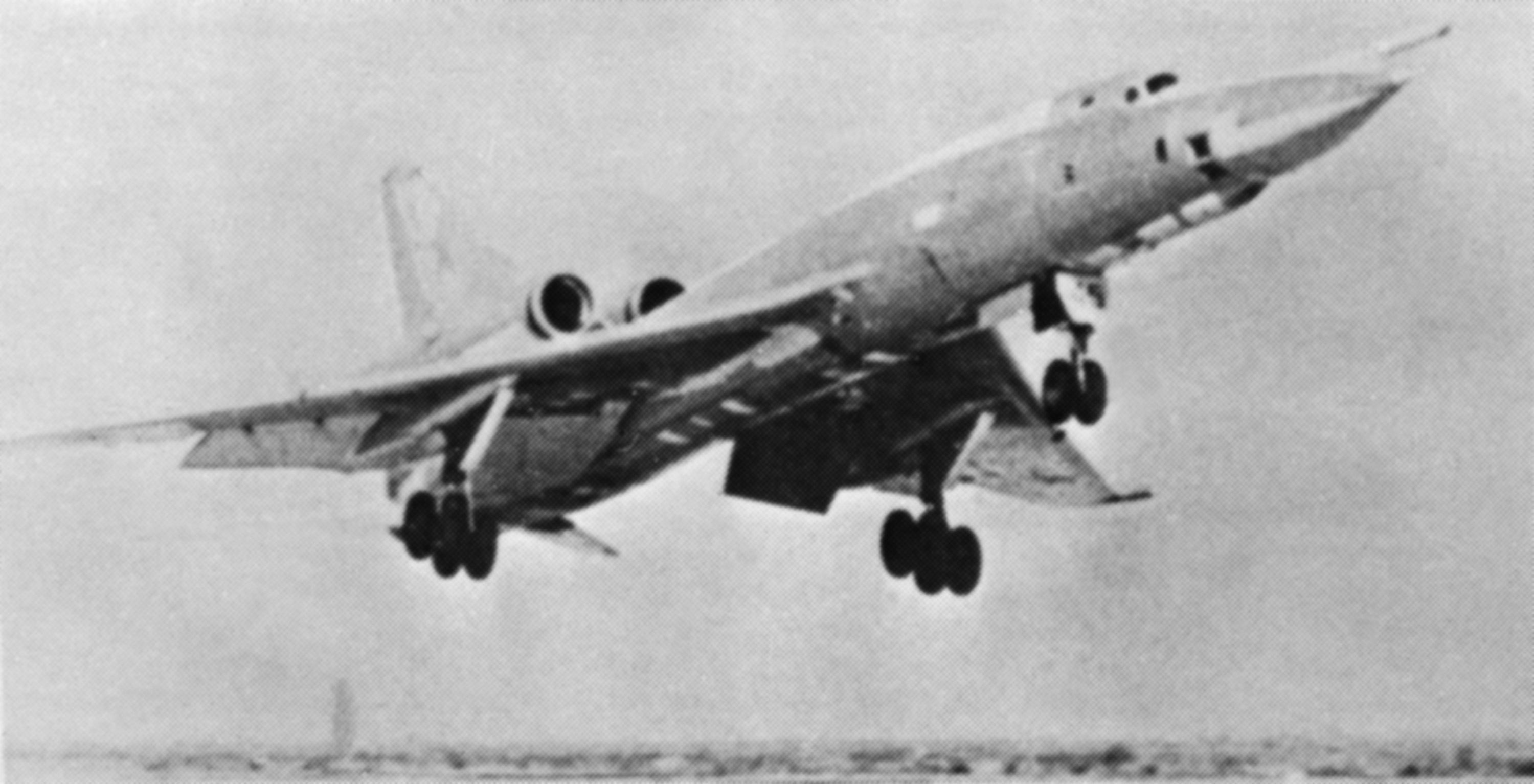|
KhAB-250
The KhAB-250 is the provisional naming of an aerial bomb developed by the Soviet Air Force to deliver the chemical weapon sarin. The KhAB-250 operational weight has been reported as and . 24 could be carried by the Tupolev Tu-22. The bomb uses a burst charge to detonate on impact with the ground. It contains a payload of of sarin. The KhAB-250 was displayed at Shikani Test and Proving Grounds in 1986 as a component of the then-current Soviet chemical arsenal. Contemporary analysts noted that it appeared relatively unsophisticated compared to Soviet conventional munitions of the same time frame. The bomb was removed from service as a result of the Chemical Weapons Convention in the early 1990s. See also * KhAB-500 *KAB-250 The KAB-250 is a family of aerial bombs developed in the 2000s. It comes in two forms, the KAB-250LG-E laser-guided bomb and KAB-250S-E satellite-guided bomb. It is being introduced into service with the post-Soviet Russian Air Force since 2020. ... R ... [...More Info...] [...Related Items...] OR: [Wikipedia] [Google] [Baidu] |
KhAB-500
The KhAB-500 is the provisional naming of a series of World War II-era aerial bombs developed by the Soviet Air Force to deliver chemical weapons. History and Design KhAB-500s were typically filled with yperite (R-5) or phosgene (R-10). It was in diameter and about long. Its loaded weight was about including roughly of chemical agent and a impact-fused burst charge. Upon detonation, the KhAB-500 R-10 would create a hemispherical cloud of gas with a radius of . In ideal weather conditions, the phosgene cloud could produce serious medical effects up to downwind. The KhAB-500 was carried by Soviet Union era aircraft. The bomb was removed from service as a result of the Chemical Weapons Convention in the early 1990s. See also *KhAB-250 *KAB-500L The KAB-500L is a laser-guided bomb developed by the Soviet Air Force, entering service in 1975. It remains in service with the CIS and post-Soviet Russian Air Force. The KAB-500L is a standard FAB-500 general-purpose bomb, whi ... [...More Info...] [...Related Items...] OR: [Wikipedia] [Google] [Baidu] |
KAB-250
The KAB-250 is a family of aerial bombs developed in the 2000s. It comes in two forms, the KAB-250LG-E laser-guided bomb and KAB-250S-E satellite-guided bomb. It is being introduced into service with the post-Soviet Russian Air Force since 2020. KAB stands for "Корректируемая Авиационная Бомба" which means "Managed (corrected) aircraft bomb" and refers to high-precision weapons. The KAB-250 is long and weighs . Its warhead makes up of the total weight, of which is blast-effect high explosive. Russian sources credit it with a CEP of to . The technology of KAB-250 is also used for the larger KAB-500L. It has a noticeable, egg-shaped form and has been integrated on and dropped by Sukhoi Su-34 on Islamic State of Iraq and the Levant targets from 5000m altitudes. See also *KhAB-250 The KhAB-250 is the provisional naming of an aerial bomb developed by the Soviet Air Force to deliver the chemical weapon sarin. The KhAB-250 operational weight ha ... [...More Info...] [...Related Items...] OR: [Wikipedia] [Google] [Baidu] |
Aerial Bomb
An aerial bomb is a type of explosive or incendiary weapon intended to travel through the air on a predictable trajectory. Engineers usually develop such bombs to be dropped from an aircraft. The use of aerial bombs is termed aerial bombing. Bomb types Aerial bombs include a vast range and complexity of designs. These include unguided gravity bombs, guided bombs, bombs hand-tossed from a vehicle, bombs needing a large specially-built delivery-vehicle, bombs integrated with the vehicle itself (such as a glide bomb), instant-detonation bombs, or delay-action bombs. As with other types of explosive weapons, aerial bombs aim to kill and injure people or to destroy materiel through the projection of one or more of blast, fragmentation, radiation or fire outwards from the point of detonation. Early bombs The first bombs delivered to their targets by air were single bombs carried on unmanned hot air balloons, launched by the Austrians against Venice in 1849 during the First Ita ... [...More Info...] [...Related Items...] OR: [Wikipedia] [Google] [Baidu] |
Soviet Air Force
The Soviet Air Forces ( rus, Военно-воздушные силы, r=Voyenno-vozdushnyye sily, VVS; literally "Military Air Forces") were one of the air forces of the Soviet Union. The other was the Soviet Air Defence Forces. The Air Forces were formed from components of the Imperial Russian Air Service in 1917, and faced their greatest test during World War II. The groups were also involved in the Korean War, and dissolved along with the Soviet Union itself in 1991–92. Former Soviet Air Forces' assets were subsequently divided into several air forces of former Soviet republics, including the new Russian Air Force. "March of the Pilots" was its song. Origins The ''All-Russia Collegium for Direction of the Air Forces of the Old Army'' (translation is uncertain) was formed on 20 December 1917. This was a Bolshevik aerial headquarters initially led by Konstantin Akashev. Along with a general postwar military reorganisation, the collegium was reconstituted as the "Workers' an ... [...More Info...] [...Related Items...] OR: [Wikipedia] [Google] [Baidu] |
Chemical Weapon
A chemical weapon (CW) is a specialized munition that uses chemicals formulated to inflict death or harm on humans. According to the Organisation for the Prohibition of Chemical Weapons (OPCW), this can be any chemical compound intended as a weapon "or its precursor that can cause death, injury, temporary incapacitation or sensory irritation through its chemical action. Munitions or other delivery devices designed to deliver chemical weapons, whether filled or unfilled, are also considered weapons themselves." Chemical weapons are classified as weapons of mass destruction (WMD), though they are distinct from nuclear weapons, biological weapons, and radiological weapons. All may be used in warfare and are known by the military acronym NBC (for nuclear, biological, and chemical warfare). Weapons of mass destruction are distinct from conventional weapons, which are primarily effective due to their explosive, kinetic, or incendiary potential. Chemical weapons can be widely dispe ... [...More Info...] [...Related Items...] OR: [Wikipedia] [Google] [Baidu] |
Sarin
Sarin (NATO designation GB G-series, "B"">Nerve_agent#G-series.html" ;"title="hort for Nerve agent#G-series">G-series, "B" is an extremely toxic synthetic organophosphorus compound.Sarin (GB) Emergency Response Safety and Health Database. National Institute for Occupational Safety and Health. Accessed April 20, 2009. A colourless, odourless , it is used as a due to its extreme potency as a . Exposure is lethal even at very low concen ... [...More Info...] [...Related Items...] OR: [Wikipedia] [Google] [Baidu] |
Tupolev Tu-22
The Tupolev Tu-22 ( NATO reporting name: Blinder) was the first supersonic bomber to enter production in the Soviet Union. Manufactured by Tupolev, the Tu-22 entered service with the Soviet military in the 1960s. The aircraft was a disappointment, lacking both the speed and range that had been expected. It was also a difficult design to fly and maintain. It was produced in small numbers, especially compared to the Tupolev Tu-16 it was designed to replace. The aircraft was later adapted for other roles, notably as the Tu-22R reconnaissance aircraft and as carriers for the long-range Kh-22 anti-shipping missile, antiship missile. Tu-22s were sold to other nations, including Libyan Arab Jamahiriya, Libya and Ba'athist Iraq, Iraq. The Tu-22 was one of the few Soviet jet bombers to see combat: Libyan Tu-22s were used Uganda–Tanzania War, against Tanzania Chadian–Libyan conflict, and Chad, and Iraqi Tu-22s were used during the Iran–Iraq War. Development Previous efforts In th ... [...More Info...] [...Related Items...] OR: [Wikipedia] [Google] [Baidu] |
Chemical Weapons Convention
The Chemical Weapons Convention (CWC), officially the Convention on the Prohibition of the Development, Production, Stockpiling and Use of Chemical Weapons and on their Destruction, is an arms control treaty administered by the Organisation for the Prohibition of Chemical Weapons (OPCW), an intergovernmental organization based in The Hague, The Netherlands. The treaty entered into force on 29 April 1997, and prohibits the large-scale use, development, production, stockpiling and transfer of chemical weapons and their precursors, except for very limited purposes (research, medical, pharmaceutical or protective). The main obligation of member states under the convention is to effect this prohibition, as well as the destruction of all current chemical weapons. All destruction activities must take place under OPCW verification. As of August 2022, 193 states have become parties to the CWC and accept its obligations. Israel has signed but not ratified the agreement, while three other U ... [...More Info...] [...Related Items...] OR: [Wikipedia] [Google] [Baidu] |
Cold War Aerial Bombs Of The Soviet Union
Cold is the presence of low temperature, especially in the atmosphere. In common usage, cold is often a subjective perception. A lower bound to temperature is absolute zero, defined as 0.00K on the Kelvin scale, an absolute thermodynamic temperature scale. This corresponds to on the Celsius scale, on the Fahrenheit scale, and on the Rankine scale. Since temperature relates to the thermal energy held by an object or a sample of matter, which is the kinetic energy of the random motion of the particle constituents of matter, an object will have less thermal energy when it is colder and more when it is hotter. If it were possible to cool a system to absolute zero, all motion of the particles in a sample of matter would cease and they would be at complete rest in the classical sense. The object could be described as having zero thermal energy. Microscopically in the description of quantum mechanics, however, matter still has zero-point energy even at absolute zero, because ... [...More Info...] [...Related Items...] OR: [Wikipedia] [Google] [Baidu] |
Aerial Bombs Of Russia
Aerial may refer to: Music *Aerial (album), ''Aerial'' (album), by Kate Bush *Aerials (song), ''Aerials'' (song), from the album ''Toxicity'' by System of a Down Bands *Aerial (Canadian band) *Aerial (Scottish band) *Aerial (Swedish band) Performance art *Aerial silk, apparatus used in aerial acrobatics *Aerialist, an acrobat who performs in the air Recreation and sport *Aerial (dance move) *Aerial (skateboarding) *Aerial adventure park, ropes course with a recreational purpose *Aerial cartwheel (or side aerial), gymnastics move performed in acro dance and various martial arts *Aerial skiing, discipline of freestyle skiing *Front aerial, gymnastics move performed in acro dance Technology Antennas *Aerial (radio), a radio ''antenna'' or transducer that transmits or receives electromagnetic waves **Aerial (television), an over-the-air television reception antenna Mechanical *Aerial fire apparatus, for firefighting and rescue *Aerial work platform, for positioning ... [...More Info...] [...Related Items...] OR: [Wikipedia] [Google] [Baidu] |




